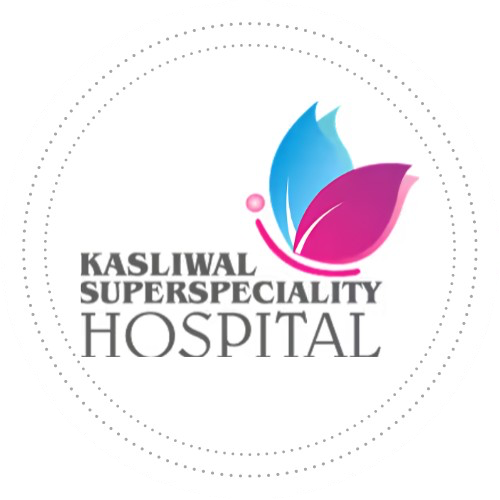Orthopaedics stands at the heart of keeping our bodies mobile, strong, and pain-free. For millions in India, bone and joint health is not just about movement—it’s about living an active life, working, participating in sports, and performing daily routines without discomfort. Whether a person is an athlete, a senior citizen, or a desk worker, understanding orthopaedics empowers better choices for long-term well-being.
This comprehensive guide unfolds the basics of orthopaedics, explains why the field matters to every age group, and delivers practical insights for Indian readers aiming to maintain or restore musculoskeletal health.
What Is Orthopaedics?
Orthopaedics is the medical specialty focusing on the prevention, diagnosis, and treatment of conditions and injuries involving the musculoskeletal system. This system includes:
- Bones
- Joints
- Muscles
- Ligaments
- Tendons
- Nerves
Orthopaedic care spans everything from birth defects to age-related wear and tear, sports injuries to trauma from accidents. Specialists in this field are called orthopedists or orthopaedic surgeons.
History and Evolution
The word “orthopaedics” comes from Greek roots meaning “straight” and “child,” originally referring to correcting childhood skeletal deformities. Today, it covers all ages and every aspect of bone and joint care—from simple fractures to complex reconstructive surgery, joint replacement, and more.
The Musculoskeletal System: Building Blocks of Movement
| Component | Function | Common Issues |
| Bones | Support body, protect organs | Fractures, osteoporosis |
| Joints | Allow movement, absorb stress | Arthritis, sprains |
| Muscles | Enable movement, generate force | Strains, cramps |
| Ligaments | Connect bones, stabilize joints | Tears, instability |
| Tendons | Attach muscles to bones | Tendinitis, ruptures |
| Nerves | Signal movement, sense pain | Pinched nerves, neuropathies |
Proper functioning of each part is essential for everyday tasks—walking, running, lifting, and even sitting.
What Do Orthopaedists Do?
Orthopaedists diagnose and treat musculoskeletal problems using:
- Nonsurgical methods: Medications, physical therapy, braces, injections, and lifestyle advice.
- Surgical procedures: Fracture fixation, joint replacement, ligament repair, and minimally invasive arthroscopy.
- Rehabilitation: Prescribing exercises and therapies to restore mobility, strength, and function.
They work alongside physiotherapists, nurses, pain specialists, and sometimes rheumatologists for a holistic approach.
Common Orthopaedic Conditions
1. Arthritis
Joint inflammation causing pain and stiffness, often seen in knees, hips, and hands.
2. Fractures
Broken bones due to injury, accidents, or weakened bones (osteoporosis).
3. Sports Injuries
Ligament tears (e.g., ACL in the knee), sprains, dislocations, and overuse injuries such as tennis elbow.
4. Back and Neck Pain
Disc problems, muscle strains, and postural issues affecting the spine.
5. Bone and Joint Deformities
Clubfoot, scoliosis, bow legs—often treated early for best results.
Key Subspecialties in Orthopaedics
- Pediatric orthopaedics: Treats child deformities and growth disorders.
- Sports medicine: Focuses on athletic injuries and rapid recovery.
- Trauma surgery: Handles fractures, dislocations, and accident-related injuries.
- Spine surgery: Corrects structural and nerve issues in the back and neck.
- Hand and upper limb surgery: Specializes in fine movement restoration.
- Joint replacement: Replaces damaged joints (hip, knee) with artificial implants for pain-free movement.
How Can Indians Protect Bone and Joint Health?
1. Nutrition Matters
- Calcium and Vitamin D: Key for strong bones; get from milk, dals, green veggies, sunlight.
- Protein: Muscle strength comes from a balanced intake; pulses, eggs, fish are good sources.
2. Physical Activity
Regular walking, yoga, and traditional Indian sports are excellent ways to keep joints and muscles functioning. Children’s playtime, dance, and cycling are powerful tools for bone building.
3. Preventing Injuries
- Safe home environment for seniors (remove tripping hazards).
- Use of proper gear in sports.
- Attention to posture—see a physiotherapist for ergonomic correction.
4. Managing Osteoarthritis and Aging
Early signs like pain, swelling, or reduced movement should be evaluated. Avoid self-treatment or ignoring symptoms.
5. Mind Your Weight
Obesity increases joint strain, especially knees and hips. Healthy weight management through diet and exercise can stave off arthritis.
Orthopaedics Appointments: What to Expect
An orthopaedic exam may involve:
- Thorough medical history
- Physical examination (checking alignment, strength, movement)
- Imaging tests—X-rays, MRI, CT scans
- Discussion of nonsurgical or surgical options
- Setting a recovery plan with exercises and follow-up
The Importance of Rehabilitation
Every orthopaedic treatment plan ends with rehabilitation to ensure maximum recovery. Experts design:
- Targeted exercises for strength and flexibility
- Mobility training for balance and coordination
- Pain management and return to daily function
In India, physiotherapists play a critical role – from hospital care to community centers.
FAQ
- Should I see an orthopaedist for minor sprains or only major injuries?
Orthopaedists treat both minor and major musculoskeletal problems. Early intervention, even for lesser injuries, ensures proper healing and prevents future complications. - What is the difference between physiotherapy and orthopaedics?
Orthopaedics is the medical specialty diagnosing and treating bone and joint diseases, often including surgery. Physiotherapy focuses on rehabilitation, movement restoration, and pain management through exercises. - Are joint replacements safe and how long do they last?
Joint replacements are rigorously tested and have high success rates. Most modern implants last 15–25 years or more, allowing patients to regain pain-free movement and independence.
